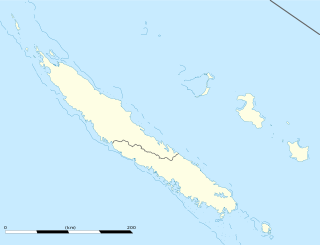Features
Phonology
Robert Hall (1944) gives the following phonemic inventory:
- Vowels: [i, ɪ, e, ɛ, æ, a, ə, ɔ, o, ʊ, u]
- Consonants: [p, t, k, b, d, g, m, n, ŋ, f, v, θ, ð, s, z, š, ž, č, ǧ, l, r, h, j, w]
Native speakers of English use this inventory. Because most lexical items in CPE are derived from English, native English speakers simply use the pronunciation familiar to them. For non-native English speakers, who were largely Cantonese speakers, [v, θ, ð, r, š, ž] are not present, because these sounds are not present in Cantonese. [12]
Hall also describes a few morphophonemic alterations. Many verbs ending in consonants may optionally add a vowel, as in [tek(i)] 'to take' and [slip(a)] 'to sleep'. Words ending in [r] and [l], and sometimes [d], optionally omit the final consonant, as in [litə(l)] 'little' and [mo(r)] 'more'. Certain stems also frequently lose their final consonant when before certain suffixes, as in [hwat] 'what?' ([hwasajd] 'where?,' [hwatajm] 'when?,' [hwafæšan] 'how?'), [ðæt] 'that' (ðæsajd 'there'), awt 'out' (awsajd 'outside'). [13] Attention: This template ({{ cite jstor }}) is deprecated. To cite the publication identified by jstor:594237, please use {{ cite journal }} with |jstor=594237 instead.
Baker and Mühlhäusler point out that Hall's data was taken entirely from native speakers of English, several decades after CPE was widely used. For this reason, they are skeptical of the data presented. [14] Nonetheless, their own presentation of phonology in CPE is largely the same as Hall's. They state that [s] and [š] were not phonemically contrastive for Cantonese speakers. Words ending in [f] in English often had an added [o] as in thiefo. Aside from these additions, Baker and Mühlhäusler have few revisions to make to the phonological claims Hall made. [15]
Lexicon
The majority of the words used in CPE are derived from English, with influences from Portuguese, Cantonese, Malay, and Hindi.
- catchee: fetch (English catch)
- fankuei: westerner (Cantonese)
- Joss: God (Portuguese deus)
- pidgin: business (English)
- sabbee: to know (Portuguese saber)
- taipan : supercargo (Cantonese)
- two muchee: extremely (English too much) [16]
Morphology and syntax
This section may require cleanup to meet Wikipedia's quality standards. The specific problem is: Bad formatting for examples.(March 2021) |
Constructions in Chinese Pidgin English, both at the phrase level and sentence level, vary widely in taking English or Chinese structure. Generally speaking, pidgin languages have isolating morphology and so do not inflect nouns and verbs; CPE is no exception. [17] Some morphological and syntactic phenomena, which frequently appear in linguistic literature, are listed below.
Pronouns
Prior to 1800, pronouns conformed largely to British and American English paradigms. Over time, my came to be the only first person singular pronoun in CPE, replacing both I and me. He was used for subject and non-subject referents alike (Baker and Mühlhäusler 1990: 104). Plural pronouns were expressed as in English by native English speakers; [18] there is too little data from native Cantonese speakers to determine if they pluralized pronouns. [19]
Topic–comment
In CPE, once a noun has been explicitly stated, it does not need to be stated again in following sentences where that item would normally be found. This means that in a given sentence, the subject or object may be omitted. In the example below, "very poor people" is the subject for the following clauses, although they do not explicitly state it.
- "This have very poor place and very poor people: no got cloaths, no got rice, no got hog, no got nothing; only yam, little fish, and cocoa-nut; no got nothing make trade, very little make eat." [20]
The omitted noun may also be loosely related to the predicate, rather than a subject or object. In the sentence below, meaning 'He won't sell at that price,' the omitted "that pricee" is neither a subject nor an object.
- "(that pricee) he no sellum" [21]
Copula
A word derived from English have was the usual copula in CPE until 1830. It usually appears as hab or hap. Belong is also used. After 1830 it became most common to omit the copula entirely. [22]
- "Chinese man very great rogue truly, but have fashion, no can help."
("Chinese men are real rogues but that's how it is, can't help it.") [23]
Piece/piecee
This lexical item seems to have been an influence of Cantonese grammar on CPE. Cantonese uses classifiers on nouns described by a number or demonstrative. The word piecee is used where Cantonese would expect a classifier. Chop is another classifier, used only in demonstrative constructions. [24] Places where Cantonese does not use a classifier, as with the words for 'year' and 'dollar,' likewise do not have a classifier in CPE. [25]
- "You wantchee catchee one piecee lawyer."
- "You will have to engage a lawyer." [26]
- "Thisee chop tea what name?"
- "What is the name of this tea?" [27]







